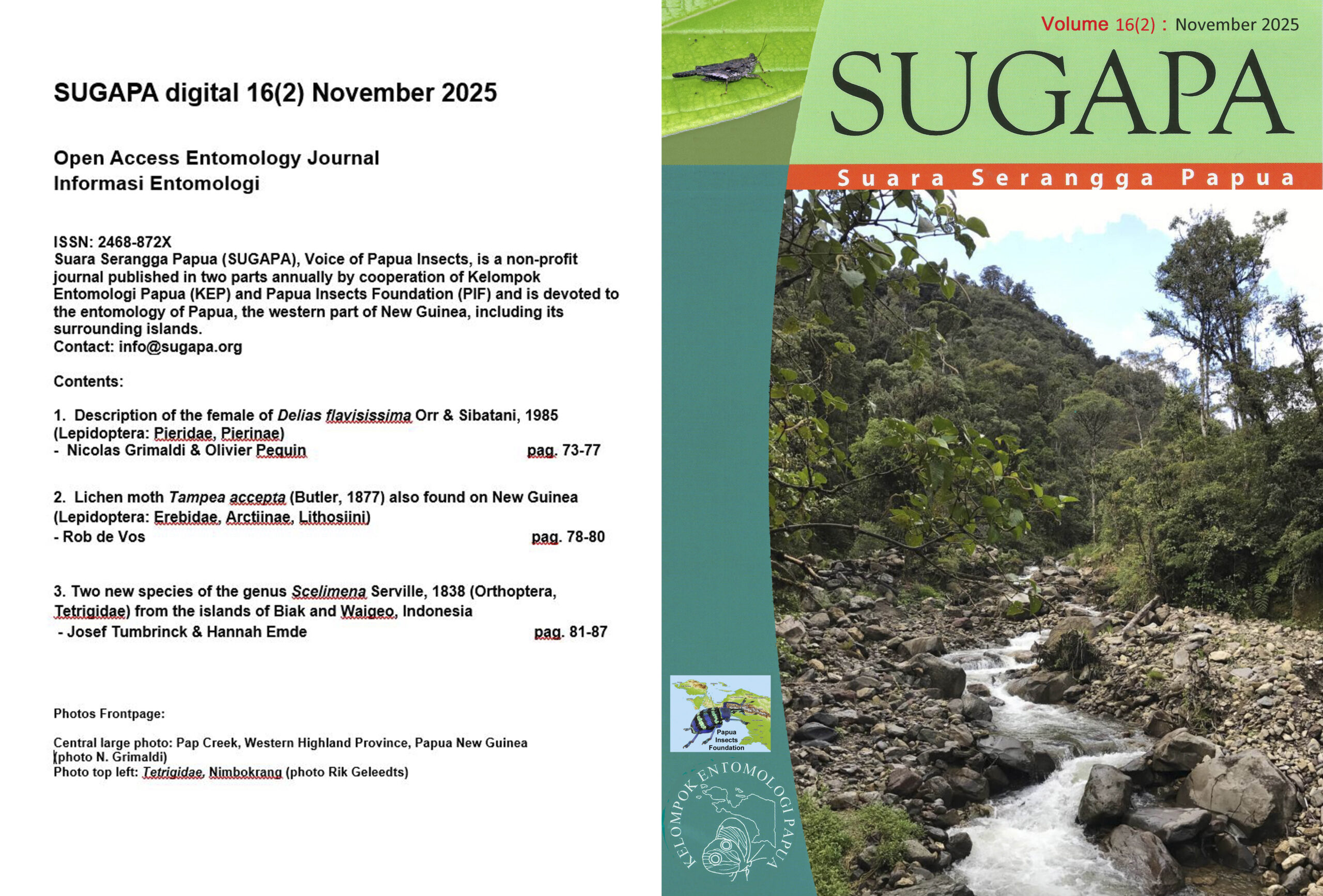2.Vina Vania Suhartawan & Viva Virginia Suhartawan
Study on the phenomenon mimicry on Butterflies (Lepidoptera) at the Cyclops Mountains Reserve
A high diversity of butterflies and moths is found in Cyclops Mountains Reserve. Less study is done on mimicry. Observation in nature is a good method in education for mimicry, a phenomenon that is common at insects especially at butterflies and moths, when a species (mimic) has profit from its superficial imitation of another species (model). The reason is often an aposematic one: by colour and/or design, which causes that predators (vertebrates) recognize the species as distasteful, inedible or dangerous. Parsons (1999) mentioned two theories: Mullerian mimicry (similarity between a number of species which are distasteful, inedible or dangerous and therefore avoided by predators) and Batesian mimicry (a single species which is palatable imitates an unpalatable or dangerous species).
Both Mullerian mimicry and Batesian mimicry are present at the Cyclops Mountains. Papilio laglaizei (Papilionidae) with Alcides agathyrsus (Uraniidae), genus Neptis (Nymphalinae, Nymphalidae) with genus Tellervo (Ithomiinae, Nymphalidae), and Papilio ambrax (female) (Papilionini, Papilionidae) with Athophaneura polydorus (Troidini, Papilionidae) are examples of Batesian mimicry. Examples of Mullerian mimicry in early stages are much more difficult to find. Good examples are the larvae and pupae of Troides oblongmaculatus and Ornithoptera priamus and the genus Hyanthis with Taenaris (both Morphinae, Nymphalidae).

 Open Access Entomology Journal
Open Access Entomology Journal


